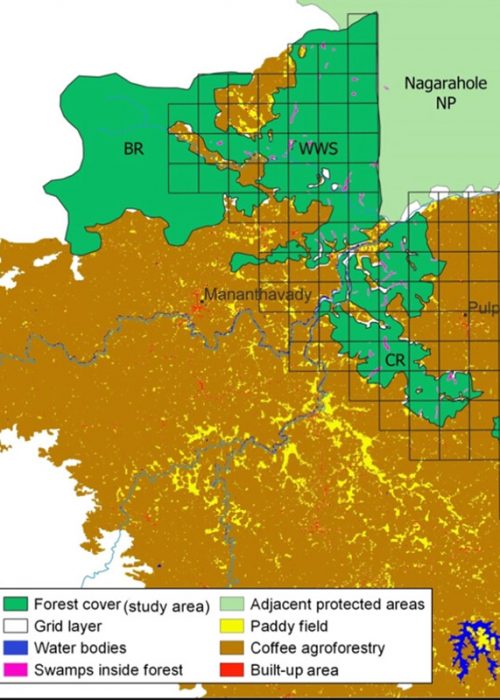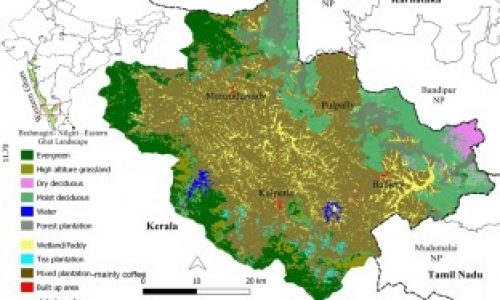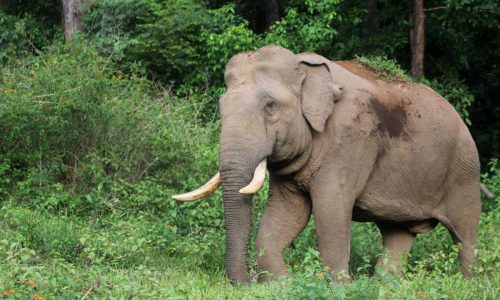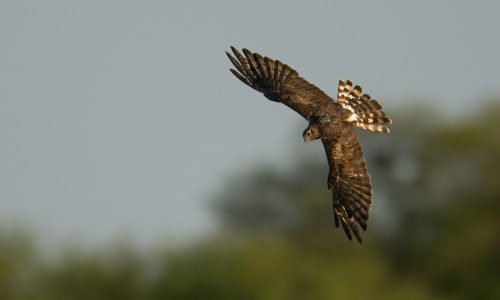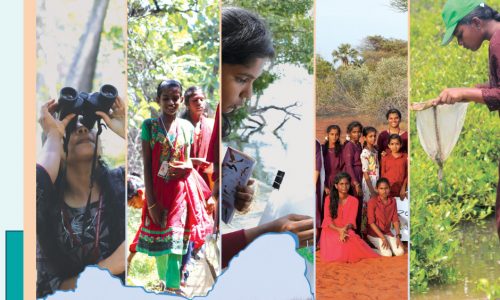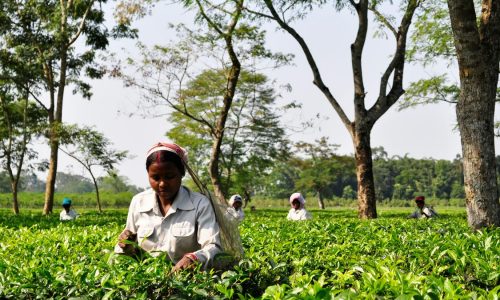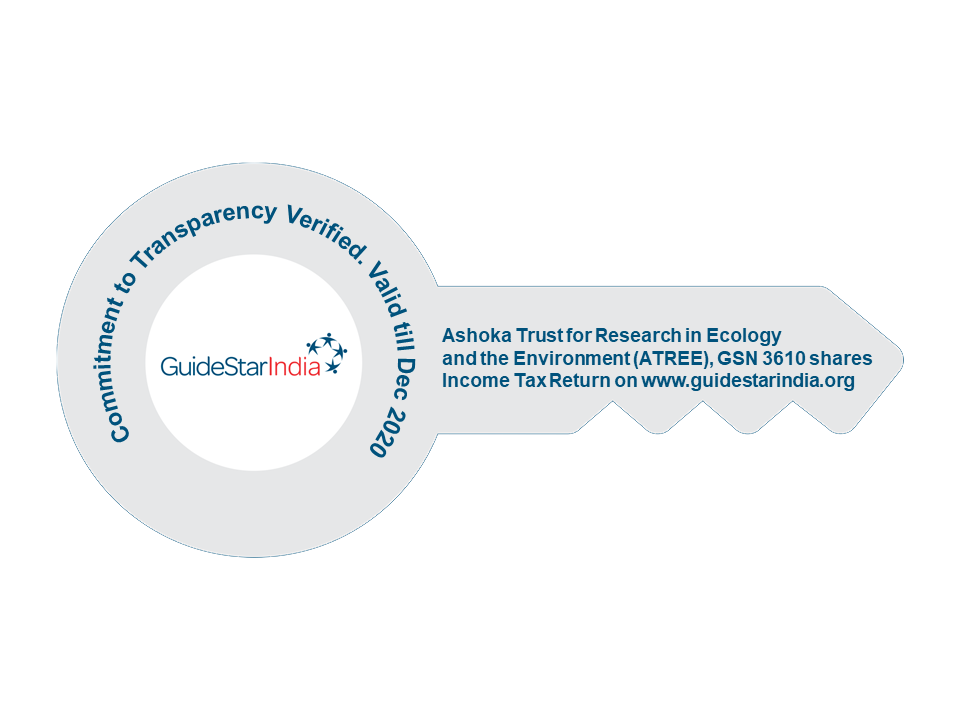Anoop N.R, Jagdish Krishnaswamy, Nachiket Kelkar, Milind Bunyan, T. Ganesh
The Journal of Wildlife Management | 11 August, 2023
Asian elephants (Elephas maximus) are globally endangered, and their populations persist in several meta-populations within fragmented landscapes across their distribution. Developing landscape-level management plans for elephants requires reliable information on the pattern and determinants of their distribution across relevant spatial and temporal scales. The Brahmagiri-Nilgiri-Eastern Ghats Landscape (Nilgiri landscape) of peninsular India supports the largest breeding population of Asian elephants globally. The Wayanad Plateau, a wet forest tract in the dry forest-dominated Nilgiri landscape, witnessed extensive forest fragmentation recently and evolved as a forest-agriculture matrix. We predicted that habitat use by elephants in the Wayanad Plateau would be high during summer because of the availability of numerous perennial streams and associated swamps that retain water and soil moisture for plant growth over the dry season. We also hypothesized that elephants would use areas with greater forest cover that are removed from human settlements. We used an occupancy-based approach that accounts for detection probability to understand factors influencing habitat use by elephants in summer (low rainfall, high temperature) and post-monsoon (largely rainless winter conditions but with abundant forage and water) in 2019 and 2020. As expected, the intensity of habitat use was higher during the summer than during the post-monsoon season. Elephants used habitats near perennial water sources and with greater forest cover, avoiding areas with high human disturbances. We emphasize the importance of areas that provide key resources for elephants during resource scarcity and the need to prevent habitat degradation for long-term persistence of elephants and mitigation of human–elephant conflict.

